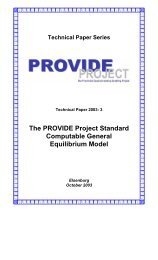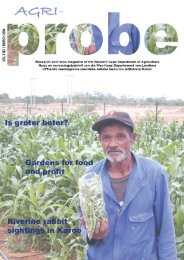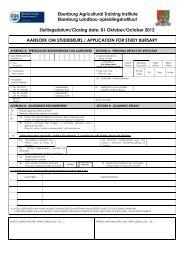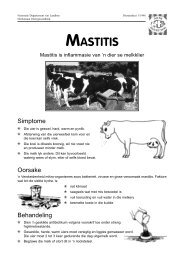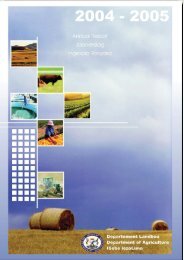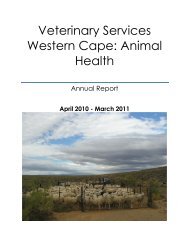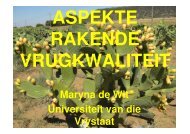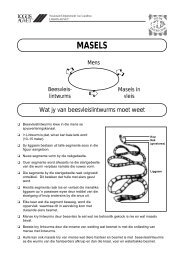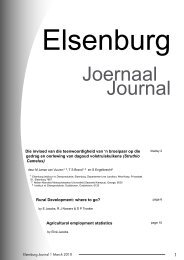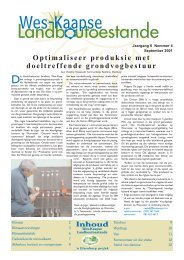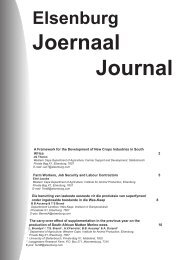honey bush tea - Department of Agriculture: Western Cape
honey bush tea - Department of Agriculture: Western Cape
honey bush tea - Department of Agriculture: Western Cape
Create successful ePaper yourself
Turn your PDF publications into a flip-book with our unique Google optimized e-Paper software.
Africa<br />
In 2000, Africa was the third largest producer with Kenya as the most important<br />
producer. Total <strong>tea</strong> production was estimated in the region <strong>of</strong> 360,000 tons <strong>of</strong> which<br />
Kenya produced about 236,000 tons. As the most recent <strong>of</strong> the <strong>tea</strong> producing<br />
countries, African countries have been able to build on the experience <strong>of</strong> other<br />
producers. As a result, Africa is now a major force in world <strong>tea</strong>, producing <strong>tea</strong>s <strong>of</strong> high<br />
quality and good bright colour which are used for blending all over the world. As a<br />
result, <strong>tea</strong> is also produced in countries such as Malawi, Uganda, Tanzania Zimbabwe,<br />
Rwanda and South Africa. Tea from these African countries is estimated at 25% <strong>of</strong><br />
world exports amounting to some 250,000 tonnes (www.<strong>tea</strong>council.uk).<br />
Sri Lanka (Ceylon)<br />
In Sri Lanka, <strong>tea</strong> production dates back from the 1860s when the first <strong>tea</strong> seedlings<br />
were introduced by Scotsman James Taylor. Ever since, <strong>tea</strong> has become the major<br />
economic factor. Sri Lanka is the 3rd biggest <strong>tea</strong> producer with a market share <strong>of</strong> 9%.<br />
Sri Lanka has over 220,0000 hectares under <strong>tea</strong> cultivation yielding about 240,000<br />
tonnes <strong>of</strong> "made" The home <strong>of</strong> Ceylon Tea. Production in 2000 was just over 300,000<br />
tons (approximately 10% <strong>of</strong> world production), but fell in the last two years to 281.1 and<br />
279.0 respectively (www.stjames<strong>tea</strong>s.co.uk).<br />
Sri Lanka_s <strong>tea</strong> is still well known and sold under the country’s colonial name Ceylon.<br />
Three categories <strong>of</strong> Ceylon <strong>tea</strong> can be distinguished according to the altitude <strong>of</strong> the<br />
area where it is cultivated:<br />
- Highgrowns: growing from 1300 to 2500 meters<br />
- Mediums: growing between 650 and 1300 meters<br />
- Lowgrowns: growing at less than 650 meters<br />
Indonesia<br />
26



